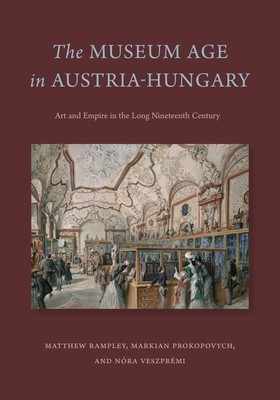
- We will send in 10–14 business days.
- Author: Matthew Rampley
- Publisher: Penn State University Press
- ISBN-10: 0271087110
- ISBN-13: 9780271087115
- Format: 17.8 x 25.4 x 1.6 cm, minkšti viršeliai
- Language: English
- SAVE -10% with code: EXTRA
Reviews
Description
This important critical study of the history of public art museums in Austria-Hungary explores their place in the wider history of European museums and collecting, their role as public institutions, and their involvement in the complex cultural politics of the Habsburg Empire.
Focusing on institutions in Vienna, Cracow, Prague, Zagreb, and Budapest, The Museum Age in Austria-Hungary traces the evolution of museum culture over the long nineteenth century, from the 1784 installation of imperial art collections in the Belvedere Palace (as a gallery open to the public) to the dissolution of Austria-Hungary after the First World War. Drawing on source materials from across the empire, the authors reveal how the rise of museums and display was connected to growing tensions between the efforts of Viennese authorities to promote a cosmopolitan and multinational social, political, and cultural identity, on the one hand, and, on the other, the rights of national groups and cultures to self-expression. They demonstrate the ways in which museum collecting policies, practices of display, and architecture engaged with these political agendas and how museums reflected and enabled shifting forms of civic identity, emerging forms of professional practice, the production of knowledge, and the changing composition of the public sphere.
Original in its approach and sweeping in scope, this fascinating study of the museum age of Austria-Hungary will be welcomed by students and scholars interested in the cultural and art history of Central Europe.
EXTRA 10 % discount with code: EXTRA
The promotion ends in 22d.09:36:03
The discount code is valid when purchasing from 10 €. Discounts do not stack.
- Author: Matthew Rampley
- Publisher: Penn State University Press
- ISBN-10: 0271087110
- ISBN-13: 9780271087115
- Format: 17.8 x 25.4 x 1.6 cm, minkšti viršeliai
- Language: English English
This important critical study of the history of public art museums in Austria-Hungary explores their place in the wider history of European museums and collecting, their role as public institutions, and their involvement in the complex cultural politics of the Habsburg Empire.
Focusing on institutions in Vienna, Cracow, Prague, Zagreb, and Budapest, The Museum Age in Austria-Hungary traces the evolution of museum culture over the long nineteenth century, from the 1784 installation of imperial art collections in the Belvedere Palace (as a gallery open to the public) to the dissolution of Austria-Hungary after the First World War. Drawing on source materials from across the empire, the authors reveal how the rise of museums and display was connected to growing tensions between the efforts of Viennese authorities to promote a cosmopolitan and multinational social, political, and cultural identity, on the one hand, and, on the other, the rights of national groups and cultures to self-expression. They demonstrate the ways in which museum collecting policies, practices of display, and architecture engaged with these political agendas and how museums reflected and enabled shifting forms of civic identity, emerging forms of professional practice, the production of knowledge, and the changing composition of the public sphere.
Original in its approach and sweeping in scope, this fascinating study of the museum age of Austria-Hungary will be welcomed by students and scholars interested in the cultural and art history of Central Europe.


Reviews